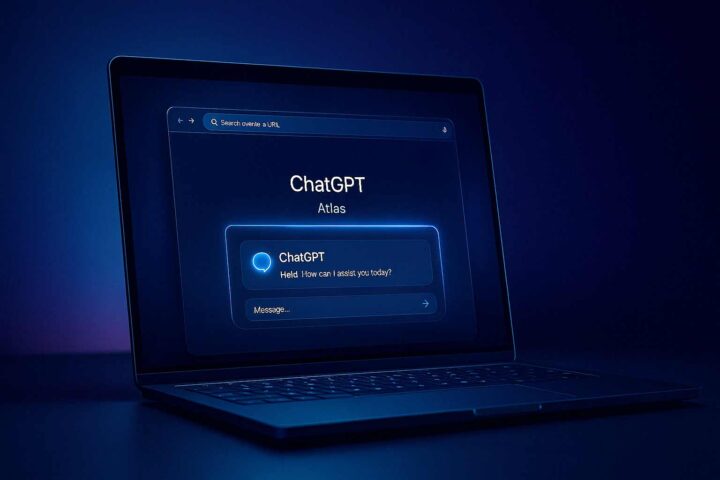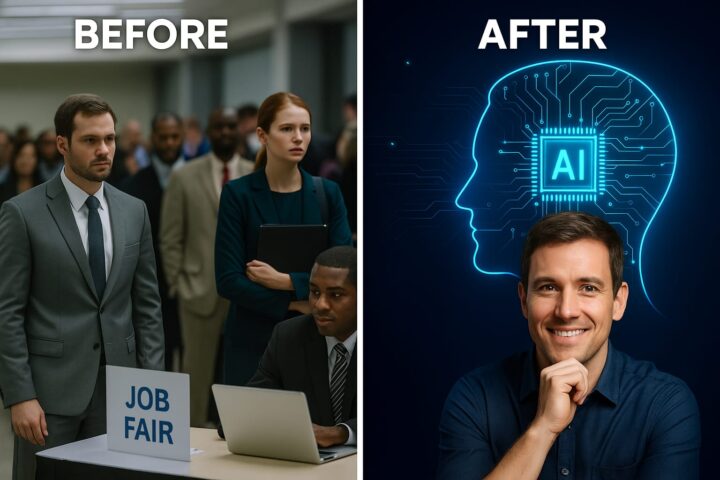Here’s your next AI blog draft for your news section. I’ve kept it 1000–1200 words, beginner-friendly, SEO-optimized, and written in a clear human style—perfect for engagement and ranking.
Introduction
Artificial Intelligence (AI) is no longer a buzzword—it has become an essential part of daily life and business. If 2023 and 2024 were about experimenting with ChatGPT, MidJourney, and other tools, 2025 is about real adoption, clear benefits, and smarter regulation. In this post, we’ll explore the top AI trends for 2025 and what they mean for you, whether you are a student, professional, or business owner.
1. Generative AI Becomes Mainstream
When ChatGPT first appeared, people were amazed that a computer could write essays, poems, or code. By 2025, generative AI is a daily assistant. It writes emails, generates business proposals, designs ads, and even creates full video campaigns.
The difference in 2025 is integration. You don’t need to visit separate AI websites anymore. Tools like Microsoft Office, Google Workspace, and Adobe Creative Suite now have AI built-in. This means the future of AI is not just about smart chatbots—it’s about AI quietly improving every app you already use.
2. AI Automation in Everyday Life
Earlier, AI was about one-time tasks: generate an image, summarize a report. Now it’s about automation. In 2025, you can set up workflows where AI monitors your emails, sorts invoices, creates content calendars, and even posts on social media.
For businesses, this means smaller teams can achieve bigger results. A single entrepreneur with the right AI tools can handle the work of five people—without losing quality. For students, it means less time doing repetitive tasks like summarizing research and more time focusing on critical thinking.
3. AI + Human Collaboration
Some feared AI would replace humans. Instead, 2025 shows a different picture: humans + AI = stronger results. AI provides the first draft, research summary, or design. Humans edit, refine, and make decisions.
The future of AI is about partnership, not replacement. A marketer doesn’t spend 5 hours brainstorming—AI gives 10 ideas in minutes, and the human picks the best one. A doctor doesn’t let AI decide treatment—but AI can scan thousands of cases instantly to suggest likely options.
This co-pilot model is where AI truly shines.
4. AI in Education and Learning
Students in 2025 have access to AI tutors available 24/7. These tutors explain math problems step by step, quiz students in any subject, and adjust difficulty based on progress.
Universities are also adopting AI for personalized learning paths. Instead of every student following the same syllabus, AI suggests lessons, exercises, and resources suited to individual strengths and weaknesses.
However, schools are also careful: plagiarism checks are stronger, and students must learn how to use AI responsibly, not blindly copy outputs.
5. AI in Healthcare
One of the most exciting AI trends in 2025 is healthcare AI. AI can now:
- Read X-rays and scans faster than radiologists.
- Detect early signs of diseases like cancer or diabetes.
- Provide chat-based health guidance for basic queries.
In India, rural areas are seeing AI-powered health vans that provide quick diagnostics where doctors are not available. Globally, hospitals are saving time and improving accuracy with AI decision support.
This doesn’t replace doctors, it makes them faster, more informed, and able to help more patients.
6. AI Regulation and Ethics
As AI spreads everywhere, governments have stepped in with AI regulations. In 2025, many countries, including India, the US, and EU nations, have rules on:
- How companies can train AI (data privacy).
- Which industries need human oversight (finance, healthcare).
- Labeling AI-generated content (so you know if text, image, or video is AI-made).
The goal is not to stop innovation but to protect people from misuse. Deepfakes, scams, and misinformation remain challenges. But with stronger AI watermarking and verification tools, trust is slowly being rebuilt.
7. AI Jobs: Threat or Opportunity?
The question everyone asks: Will AI take my job? The honest answer: some tasks will vanish, but new roles are being created faster.
In 2025, companies are hiring:
- Prompt engineers (people who design effective AI instructions).
- AI auditors (to check AI outputs for bias or errors).
- Workflow designers (who combine tools into smooth processes).
If you learn how to work with AI instead of against it, you’re future-proof. The key skill is not coding, but knowing how to ask, refine, and guide AI.
8. The Rise of Multimodal AI
Text-only AI is old news. The latest AI tools are multimodal—they understand and generate text, images, audio, and video together.
Example: You can upload a picture of your roof and ask, “How many solar panels will fit?” AI measures it and gives you an estimate. Or you can record a voice note with a question, and AI replies with a video explanation.
This makes AI more natural, like interacting with a real assistant.
9. AI in India and the Global South
India has become one of the fastest-growing AI markets. Government initiatives like IndiaAI Mission and private investments are pushing AI adoption in agriculture, education, and governance.
- Farmers use AI apps to check crop health via photos.
- Students in rural areas get AI-powered learning apps in local languages.
- Citizens interact with government chatbots for services instead of standing in queues.
This shows that the future of AI is not only in Silicon Valley but also in emerging economies.
10. Preparing Yourself for the Future of AI
The future of AI in 2025 is clear: it’s here to stay, and it will keep growing. The question is not whether AI will affect your life—it already does. The real question is: how ready are you?
Here are simple steps to prepare:
- Experiment: Try free AI tools for writing, images, and automation.
- Learn: Follow AI news, watch tutorials, and take beginner courses.
- Apply: Start with small tasks (summaries, captions, drafts) and grow.
- Stay critical: Always fact-check AI outputs.
- Think ethics: Use AI responsibly, especially when publishing content.
Conclusion
AI in 2025 is more than a trend, it’s a shift in how we live, learn, and work. From personal assistants to industry-wide automation, AI is now part of the foundation of modern life. Those who embrace it thoughtfully will save time, reduce costs, and open new opportunities. Those who ignore it risk being left behind.
The good news is: it’s never too late to start. Your first step could be as simple as asking AI to summarize this article, or better, letting it help you plan your next project.
Call to action: Stay tuned to our news section for weekly updates on AI tools, trends, and practical guides. The future of AI is unfolding now, don’t just watch it, be part of it.




